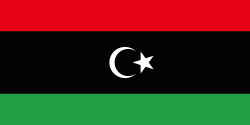An Nuqat al Khams District (An Nuqāţ al Khams)
Per the census of 2012, the total population in the region was 157,747 with 150,353 Libyans. In total, there were 22,713 households in the district, with 20,907 households belonging to Libyans. The population density of the district was 1.86 persons per sq. km. The Al-Watiya Air Base is located here.
In the north, Nuqat al Khams has a shoreline on the Mediterranean Sea. To the west, it borders the Medenine Governorate of Tunisia. Domestically, it borders Zawiya in the east, Jabal al Gharbi in the southeast and Nalut in the southwest. Nuqat al Khams is a part of Triplotania geographical region of Libya that runs from north to south. It has a set of coastal oases, plains, and limestone plateaus having an elevation of 2000 ft to 3000 ft. The region receives an annual rainfall of 16 in. There are no perennial rivers in the region, but groundwater aquifers are abundant. Along the coastal region, the climate is Mediterranean; elsewhere, it is desert. Dust storms lasting four to eight days are common during spring. The northwest region of Libya including Nuqat al Khams is called Tripolitania, the east is referred to as Cyrenaica, and Fezzen is in the southwest.
Map - An Nuqat al Khams District (An Nuqāţ al Khams)
Map
Country - Libya
 |
 |
| Flag of Libya | |
Libya has been inhabited by Berbers since the late Bronze Age as descendants from Iberomaurusian and Capsian cultures. In classical antiquity, the Phoenicians established city-states and trading posts in western Libya, while several Greek cities were established in the East. Parts of Libya were variously ruled by Carthaginians, Persians, and Greeks before the entire region becoming a part of the Roman Empire. Libya was an early center of Christianity. After the fall of the Western Roman Empire, the area of Libya was mostly occupied by the Vandals until the 7th century when invasions brought Islam to the region. In the 16th century, the Spanish Empire and the Knights of St John occupied Tripoli until Ottoman rule began in 1551. Libya was involved in the Barbary Wars of the 18th and 19th centuries. Ottoman rule continued until the Italo-Turkish War, which resulted in the Italian occupation of Libya and the establishment of two colonies, Italian Tripolitania and Italian Cyrenaica (1911–1934), later unified in the Italian Libya colony from 1934 to 1943.
Currency / Language
| ISO | Currency | Symbol | Significant figures |
|---|---|---|---|
| LYD | Libyan dinar | لد | 3 |
| ISO | Language |
|---|---|
| AR | Arabic language |
| EN | English language |
| IT | Italian language |















